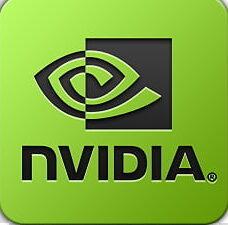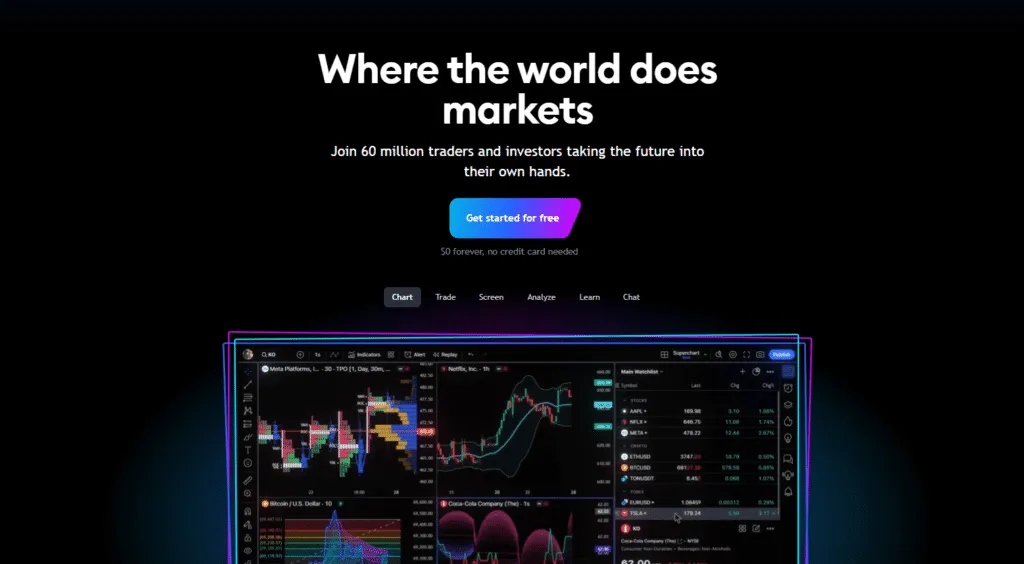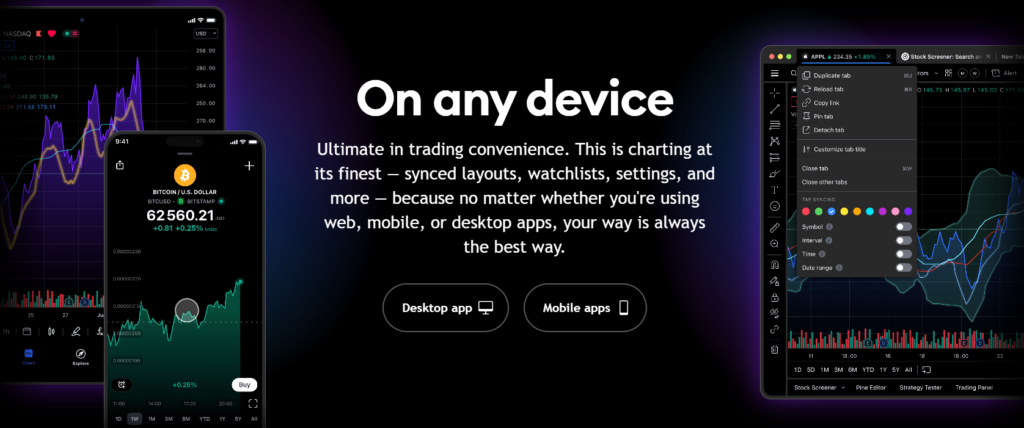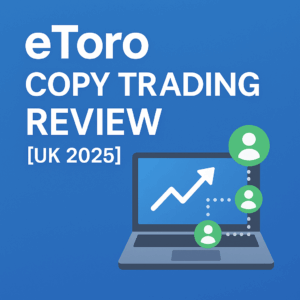Profile

Co-Founder
Thomas brings extensive experience in financial analysis and investment research. With a strong background in both institutional and retail investment sectors, Thomas ensures all content meets the highest standards of accuracy and relevance.
Follow on Twitter Connect on LinkedIn"Every piece of investment advice should be grounded in solid research and practical application. My role is to ensure our content provides real value to investors at every level."
My Favourite Writes:
Profile

Co-Founder
Dom is an experienced retail investor, learning his craft in what he likes to call the "hard way". Through many of these lessons he has crafted himself a sound investment strategy that has enabled him to make investing into a business not just a hobby.
Follow on Twitter"Financial clarity and integrity are the cornerstones of everything we do. We're here to ensure that your investment journey is built on a solid financial understanding and a sound strategic foundation."
My Favourite Writes:
Profile

Co-founder & Senior Financial Platform Analyst
Adam founded The Investors Centre in 2023 and has personally tested 50+ UK financial platforms. An active investor since 2013, he has authored 200+ platform guides and oversees all testing methodology.
Follow on Twitter Connect on LinkedIn"Investment is about more than just numbers; it's about strategy, research, and the willingness to adapt."
My Favourite Writes:
How We Test
Our Commitment to Accuracy
At The Investors Centre, we maintain the highest standards of accuracy and reliability in all our investment education content. Every article undergoes rigorous fact-checking and review processes.
Our Testing & Verification Process
- Primary Research: We gather data directly from official sources including company reports, regulatory filings, and government databases.
- Platform Testing: Our team personally tests and evaluates investment platforms, creating accounts and documenting real user experiences.
- Expert Analysis: Content is reviewed by experienced investors and financial professionals within our team.
- Data Verification: All statistics, figures, and claims are cross-referenced with multiple authoritative sources.
- Regular Updates: We review and update content quarterly to ensure information remains current and accurate.
Review Standards
- Independence: We maintain editorial independence and disclose any potential conflicts of interest.
- Transparency: Our testing methodology and evaluation criteria are clearly documented.
- Objectivity: Reviews are based on measurable criteria and standardized testing procedures.
Corrections Policy
If errors are identified, we correct them promptly and note significant updates at the bottom of articles. Readers can report inaccuracies to our editorial team at info@theinvestorscentre.co.uk
Last Review Date
This article was last fact-checked and updated on: October 12, 2025
Disclaimer
Educational Purpose Only
All content on The Investors Centre is provided for educational and informational purposes only. It should not be construed as personalised investment advice, financial advice, or a recommendation to buy, sell, or hold any investment or security.
No Financial Advice
We are not authorised by the Financial Conduct Authority (FCA) to provide investment advice. Content on this website does not constitute financial advice, and you should not rely on it as such. Always consult with a qualified financial advisor or professional before making investment decisions.
Investment Risks
Investing carries inherent risks, including the potential loss of principal. Past performance does not guarantee future results. The value of investments can go down as well as up, and you may not get back the amount originally invested.
Accuracy & Completeness
While we strive to provide accurate and up-to-date information, we make no representations or warranties of any kind, express or implied, about the completeness, accuracy, reliability, suitability, or availability of the information contained on this website.
Third-Party Content & Links
This website may contain links to third-party websites and references to third-party products or services. We do not endorse, control, or assume responsibility for any third-party content, privacy policies, or practices. Users access third-party sites at their own risk.
Affiliate Disclosure
Some links on this site may be affiliate links. If you click on these links and make a purchase or sign up for a service, we may receive a commission at no additional cost to you. This does not influence our editorial content or reviews.
Personal Responsibility
Any action you take upon the information on this website is strictly at your own risk. We will not be liable for any losses or damages in connection with the use of our website or the information provided.
Regulatory Notice
Investment products and services featured on this website may not be available in all jurisdictions or to all persons. Users are responsible for complying with local laws and regulations.
Contact Information
For questions about this disclaimer or our content, please contact:
Email: info@theinvestorscentre.co.uk
Last Updated
This disclaimer was last updated on: August 2025






Does not include ISA deposits.
Quick Answer: Is TradingView Any Good?
TradingView remains one of the best charting platforms in 2025, offering powerful tools for technical analysis, strategy testing, and real-time market tracking. With flexible pricing and seamless cross-device access, it’s ideal for both beginners and serious traders looking for a professional, web-based trading solution.
Authors Comments
After testing TradingView daily across web and mobile, I still rate it as the most complete charting tool for traders in 2025. Its blend of custom scripting, community tools, and multi-market support makes it unbeatable for serious analysis, though real-time data costs can add up. – Thomas Drury
Quick Verdict
| Category | Rating | Verdict |
|---|---|---|
| Ease of Use | 4.8/5 | Exceptionally clean and intuitive interface |
| Features | 4.9/5 | Outstanding charting, scripting, and social tools |
| Performance | 4.7/5 | Fast, stable, and highly responsive across devices |
| Value for Money | 4.4/5 | Free plan solid; paid tiers worth it for pros |
| Security | 4.8/5 | Secure login, GDPR-compliant, and stable uptime |
| Overall | 4.7/5 | Still the best all-round charting platform for traders |
Who Should Use TradingView?
TradingView is ideal for traders who rely on technical analysis, multiple indicators, and chart customisation. It’s built for anyone serious about charting — from beginners learning market structure to professionals running complex strategies. Its flexibility, real-time alerts, and backtesting tools make it suitable for both short- and long-term trading styles.
How Easy Is TradingView to Use?
I found TradingView incredibly intuitive right from the start — it didn’t overwhelm me like some traditional trading platforms do. The layout is clean and responsive, with a customisable workspace that lets me drag and drop charts, indicators, and watchlists exactly where I want them. I didn’t need a user manual to figure out how things worked — it just made sense.
Is the Interface Beginner-Friendly?
Absolutely. When I first started using TradingView, I was impressed by how polished everything felt. The toolbar is simple but powerful, the watchlist sits neatly on the side, and I could pull up new charts in just a click. Zooming in, layering indicators, or switching between assets takes seconds. It’s great for visual traders, and not too cluttered for everyone else — perfect for building confidence early on.
What Learning Tools Does It Offer?
TradingView makes onboarding painless. I leaned on the built-in tutorials and the help centre when I wanted to learn more advanced features, but honestly, I picked up most things just by exploring. What helped even more were the thousands of community-shared scripts and strategies — I could copy, tweak, and learn from them directly on the chart.
How reliable Is the Mobile App?
The mobile app is one of the best I’ve used. It mirrors the desktop functionality really well, and I often check charts or set alerts on my phone when I’m away from my setup. On both tablets and smartphones, everything runs smooth, there’s no lag, or shortcomings in the usability.
What Are the Standout Features of TradingView in 2025?
What keeps me coming back to TradingView is its remarkable power and flexibility. It’s not just a charting tool — it’s a full suite for technical analysis, strategy testing, and market tracking. Every feature feels thoughtfully built, whether I’m drawing trendlines or coding my own indicators.
TradingView’s charts are some of the best I’ve used. I can draw anything from simple support and resistance lines to detailed Fibonacci retracements, and all updates are in real-time. The multi-timeframe overlays are especially helpful; I often layer a 1-hour chart over a daily chart to spot alignment. Plus, the ability to save and switch between multiple layouts helps me stay organised whether I’m trading stocks or crypto.
What Kind of Indicators and Scripts Are Available?
This is where TradingView really shines. It comes with over 100 built-in indicators, but what I really love is the community library. There are more than 100,000 custom scripts — everything from moving average crossovers to complex volume analysis tools. And thanks to Pine Script 5.0, I’ve even built a few of my own. You can backtest them right on the chart, which is a massive time-saver.
Can You Set Custom Alerts and Notifications?
Yes, and they’re incredibly versatile. I set price alerts, indicator-based triggers, and even multi-condition alerts — like when RSI is below 30 and price hits a key level. TradingView lets me receive them via push, email, or SMS, so I never miss a setup, even when I’m away from my desk.
What Other Tools Are Included?
Beyond charts, I get access to real-time economic calendars, embedded financial news, heatmaps, bar replay (which I use for practice), and a social feed full of trade ideas. It’s all integrated, so I don’t have to bounce between platforms to stay informed.
How Much Does TradingView Cost in 2025?
TradingView has a plan for every type of trader, including a solid free version, which is how I got started. I later upgraded to Pro+ for the extra chart layouts and alerts, and it’s been well worth it for the tools I use every day.
What Are the Pricing Plans?
There are four main plans: Free, Pro, Pro+, and Premium. You can pay monthly or save a bit by going annual — I personally chose the annual Pro+ plan to lock in the discount. If you’re on the fence, there’s also a 30-day trial so you can test-drive the paid features without risk.
Here’s a quick breakdown of what you get with each:
| Plan | Price (Monthly) | Charts/Layout | Indicators | Alerts | Ideal For |
|---|---|---|---|---|---|
| Free | $0 | 1 | 3 | 1 | Beginners |
| Pro | $14.95 | 2 | 5 | 10 | Casual traders |
| Pro+ | $29.95 | 4 | 10 | 30 | Daily traders |
| Premium | $59.95 | 8 | 25 | 400 | Advanced, quant users |
I use Pro+ because it provides me with the flexibility to run multiple strategies simultaneously. Although it should be noted that real-time data for some exchanges (like NYSE or LSE) comes with an extra monthly fee. It’s optional, but I’ve added a few of them to track live prices with accuracy.
Can You Trade Directly on TradingView?
Yes — and I do it regularly. TradingView lets you place real trades through integrated brokers right from the chart interface, which means you can go from analysis to execution without switching platforms. It’s incredibly efficient once everything is set up.
How Reliable Is the Trade Execution?
Order execution has been smooth in my experience. You can place market, limit, stop, or trailing orders directly from the chart — just right-click or tap a button on mobile. It’s intuitive and fast, especially for day trading. That said, TradingView doesn’t handle your funds, it is not a broker itself. All transactions go through your connected broker, and execution speed ultimately depends on them.
The integration works well for managing trades visually, but it’s worth noting that more advanced order types or portfolio tracking features are usually handled outside TradingView on the broker’s side. Still, for most active traders, the setup is more than enough.
How Secure and Reliable Is TradingView?
From what I’ve seen using it daily, TradingView takes security and reliability seriously. I’ve never experienced a data breach or major outage, and the platform feels stable even during high-volatility events.
I always enable two-factor authentication (2FA), and TradingView makes that easy. Login sessions are encrypted, and they follow GDPR guidelines, which is reassuring — especially if you’re trading across global markets. I’ve never had concerns about account safety or personal data being mishandled.
How Stable Is the Platform?
Performance-wise, TradingView is rock-solid. I’ve used it during earnings seasons, FOMC announcements, and major crypto events, and the charts never froze or lagged. Load times are fast whether I’m on desktop or mobile. Uptime has been excellent over the years, and while I’ve heard of brief outages in the past, I’ve never experienced one myself.
Even during fast-moving markets, price updates remain smooth, and alerts fire instantly. That’s something I really value, because if your platform stalls, so does your edge. Overall,I’ve found it to be one of the most dependable tools in my trading stack.
How Does TradingView Compare to Other Tools?
I’ve used most of the major platforms over the years, but TradingView still stands out as the most balanced option when it comes to usability, flexibility, and clean design. It’s not perfect, but for visual traders like me, it ticks nearly every box.
| Feature | TradingView | MetaTrader 5 |
|---|---|---|
| Web-Based | ✅ | ❌ |
| Mobile Support | ✅ | ✅ |
| Script Language | Pine Script | MQL5 |
| Social Tools | ✅ | ❌ |
| Trade Execution | ✅ Limited | ✅ Full |
What Are the Pros and Cons of Using TradingView?
| Pros | Cons |
|---|---|
| Clean, user-friendly interface | Real-time data feeds cost extra |
| Flexible indicators and Pine Script engine | Premium plan is expensive for beginners |
| Cross-platform with cloud syncing | Limited trade execution with some brokers |
| Huge trader community and shared content | Lacks portfolio tracking and order book depth in some markets |
Overall, the strengths outweigh the drawbacks — especially if your focus is charting and strategy testing rather than full brokerage functionality.
What Do Traders and Experts Think of TradingView?
Most traders rate TradingView highly across Reddit, Trustpilot, and YouTube. Users praise its clean design, fast charts, and flexible layouts. Experienced traders love its customisation, while beginners find it easy to learn. The main drawbacks mentioned are paid real-time data and limited broker integration for direct trade execution.
What Do Industry Experts Recommend?
Trading educators and analysts I follow often highlight TradingView as the best platform for teaching technical analysis and backtesting. I’ve seen hedge fund professionals use it for visual strategy development, and it’s widely adopted in the crypto space, especially by those building and refining algo strategies. It’s well-respected for a reason.
Final Verdict: Should You Use TradingView?
If you’re serious about trading — whether you’re a swing trader, day trader, or even dabbling in algorithmic strategies — I genuinely think TradingView is worth your time. It’s visually sharp, runs smoothly, and supports everything from basic charting to advanced scripting.
For casual traders or beginners, the free plan is surprisingly robust. You can chart, test ideas, and learn at your own pace without spending a penny. But once you start needing more layouts, alerts, or indicators, I’d recommend upgrading to Pro or Pro+ — that’s when the platform really opens up.
In my view, TradingView nails the balance between power and usability. If you’re still unsure, just start with the 30-day trial of a paid plan. That’s exactly how I got hooked and I haven’t looked back since.
Trade Smarter, not Harder
- Powerful Charting Tools
- Social Trading Community
- Multi-Asset Market Coverage
Trading and investing involve risk. The value of your investments can go up or down, and you may lose all or part of your capital. These products may not be suitable for all investors. Please ensure you fully understand the risks involved.
FAQs
Is TradingView free to use?
Yes, TradingView offers a free plan with basic charting tools, one chart layout, and limited indicators. It’s a great starting point for anyone interested.
What markets can I analyse on TradingView?
You can chart and analyse stocks, forex, cryptocurrencies, commodities, indices, and bonds.
Can I place trades directly on TradingView?
Yes, TradingView supports direct trading through integrated brokers, though not all assets or order types are supported.
What’s the difference between Pro, Pro+, and Premium plans?
The higher-tier plans unlock more charts per layout, more indicators, and vastly more alerts — ideal for advanced or full-time traders.
Does TradingView work on mobile?
Yes, the mobile app is highly rated and syncs seamlessly with your desktop layouts, making it perfect for trading on the go.
Yes, with Pine Script you can code, test, and even share custom indicators and trading strategies directly within the platform.
Yes, the mobile app is highly rated and syncs seamlessly with your desktop layouts, making it perfect for trading on the go.
References
- TradingView – Pricing Plans (2025)
- TradingView – Features Overview
- Brokerage Integration – TradingView
- G2 – TradingView User Reviews
- Reddit – r/TradingView Discussions
- TradingView – Broker API Documentation











